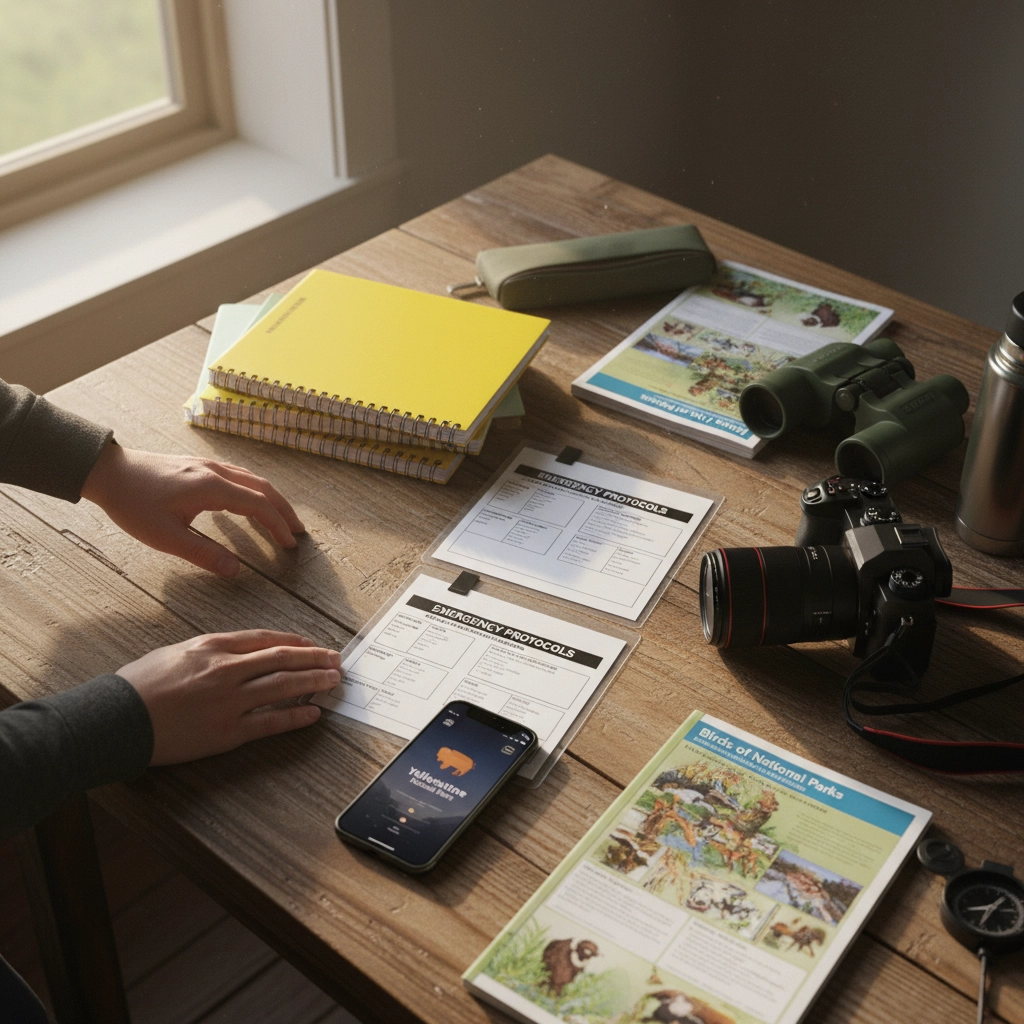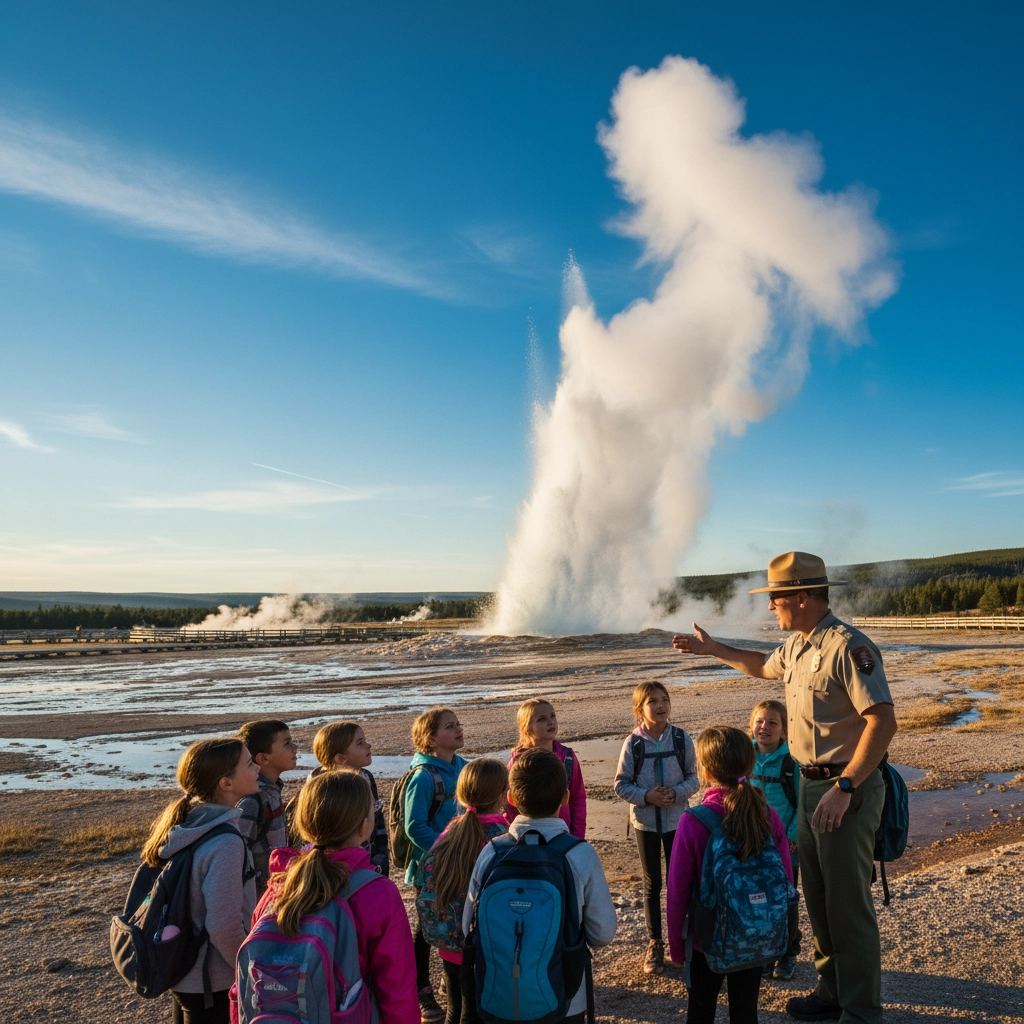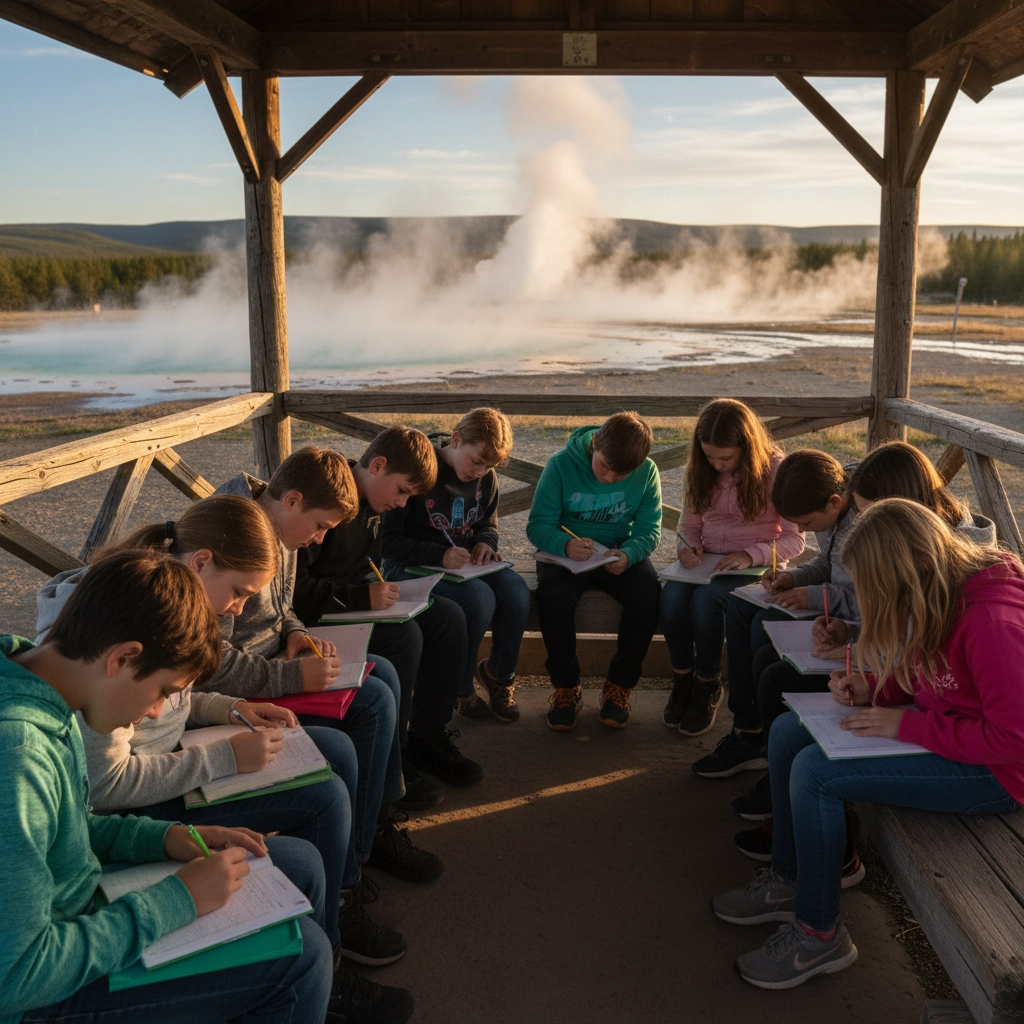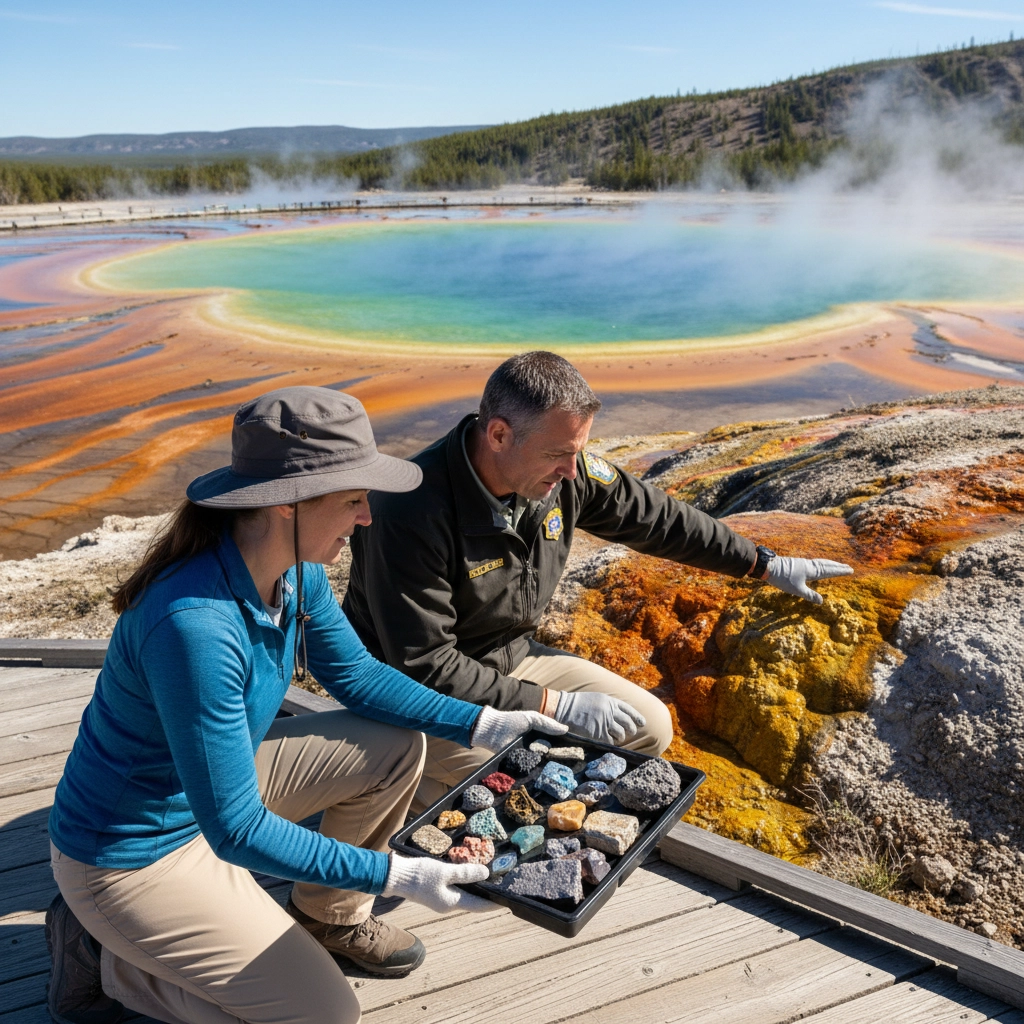Teacher's Toolkit for Yellowstone: Packing Lists, Ranger Questions & Student Reflections
- Caleb Mullenix
- Oct 21
- 5 min read
Updated: Oct 27
Ensuring the educational success of your Yellowstone expedition requires comprehensive preparation across multiple dimensions. Proper planning transforms a simple field trip into a transformative learning experience that connects classroom concepts with real-world phenomena. This comprehensive toolkit provides educators with three essential resources: strategic packing checklists, purposeful ranger interaction guides, and structured student reflection frameworks designed to maximize learning outcomes while maintaining safety and organization.
Essential Packing Checklist for Educators
Personal Professional Equipment
Begin by assembling your core educational documentation tools. Pack multiple notebooks with waterproof covers for field observations, student behavior notes, and emergency contact information. Include laminated copies of all student medical forms, emergency procedures, and park regulations. Bring extra pens and pencils, as writing instruments frequently fail in outdoor environments.
Secure a high-quality camera with multiple memory cards and backup batteries. Document geological formations, wildlife encounters, and student engagement moments for post-trip classroom integration. Pack binoculars or a spotting scope to facilitate safe wildlife observation from appropriate distances, particularly essential when viewing Yellowstone's 67 mammal species.

Educational Enhancement Materials
Assemble field identification guides including regional flora guides, The Sibley Field Guide to the Birds of Western North America, and comprehensive natural history resources such as Rocky Mountain Natural History. These materials enable immediate species identification and enhance spontaneous teaching opportunities.
Download essential mobile applications before departure: the Yellowstone SPOTR app for wildlife tracking, GeyserTimes for thermal feature predictions, and the official Yellowstone National Park app for real-time information and maps. Ensure all devices are fully charged with portable battery packs available.
Weather-Appropriate Preparations
Pack layers for dramatic elevation and weather changes throughout Yellowstone's 2.2 million acres. Include waterproof jackets, insulating layers, and sun protection including hats, sunglasses, and high-SPF sunscreen. Weather conditions can change rapidly at elevation, requiring constant adaptation.
Bring insect repellent for summer months (June through August) when mosquito and tick populations peak. Pack basic first aid supplies including bandages, antiseptic wipes, pain relievers, and any prescription medications students may require during emergencies.
Strategic Questions for Park Rangers
Geological and Thermal Features
Develop purposeful questions that connect ranger expertise with curriculum standards. Ask rangers to explain the relationship between Yellowstone's supervolcano and current thermal activity: "How do current thermal features provide evidence of the underlying volcanic system?" Request specific examples of how geothermal energy demonstrates principles of heat transfer and geological processes.
Inquire about thermal feature safety protocols and the scientific methods used to monitor geyser activity. Ask: "What temperature measurements and chemical analyses help scientists predict geyser eruptions?" This connects classroom chemistry concepts with real-world applications while emphasizing safety awareness.

Wildlife Ecology and Behavior
Focus questions on ecosystem interactions and species adaptations. Ask rangers to describe predator-prey relationships, particularly the reintroduction effects of gray wolves on elk populations and vegetation patterns. Request specific examples: "How has wolf reintroduction changed river patterns through reduced elk browsing?"
Inquire about seasonal animal behaviors and migration patterns that students can observe during their visit. Ask: "What behavioral adaptations allow bison to survive Yellowstone winters, and how do these adaptations compare to other large mammals?" These questions reinforce biological concepts while encouraging careful observation skills.
Conservation and Environmental Stewardship
Engage rangers in discussions about current conservation challenges and scientific research projects. Ask: "What ongoing research projects are studying climate change impacts in Yellowstone, and how can students contribute to citizen science efforts?" This connects classroom environmental science with active research participation.
Request information about human impact mitigation and Leave No Trace principles specific to Yellowstone environments. Ask rangers to explain how visitor behavior affects wildlife habitats and what specific actions students can take to minimize their environmental footprint.
Student Reflection Activities and Frameworks
Pre-Trip Preparation Reflections
Implement structured pre-trip reflection activities to establish learning goals and build anticipation. Provide students with reflection prompts including: "What three scientific phenomena do you most want to observe in Yellowstone, and why?" and "How do you think Yellowstone's ecosystems differ from our local environment?"
Create individual learning objective sheets where students identify specific curriculum connections they hope to experience. Encourage students to formulate personal research questions they can investigate during the expedition, promoting ownership of their learning experience.

Daily Field Reflection Protocols
Establish consistent daily reflection routines using structured templates. Provide students with field journals containing prompts such as: "Describe one geological feature observed today and explain the processes that created it" and "Identify one animal behavior witnessed and hypothesize about its ecological function."
Implement evening reflection circles where students share observations, ask questions, and connect experiences to classroom learning. Structure these discussions around specific themes: geological processes, ecological relationships, conservation challenges, and scientific methodology.
Post-Trip Integration Activities
Design comprehensive post-trip reflection assignments that synthesize expedition experiences with curriculum standards. Assign students to create presentations connecting Yellowstone observations with specific scientific concepts studied in class. Encourage students to develop action plans for environmental stewardship based on their conservation learning.
Implement peer teaching opportunities where students share expertise gained from ranger interactions and field observations. Structure these activities around specific learning objectives, ensuring all students contribute meaningfully to post-trip knowledge sharing.
Additional Resources and Professional Development
Yellowstone Forever Educational Programs
Participate in the Yellowstone STEAM Teacher Workshop, a collaborative professional development program between Yellowstone Forever and the National Park Service. This immersive experience provides hands-on, field-based activities covering wildlife ecology, geothermal systems, climate science, and cultural heritage. Teachers work alongside park rangers and scientists to develop interdisciplinary teaching strategies aligned with educational standards.
Workshop participants receive comprehensive lesson plans, experiential learning activities, and access to educator networks committed to STEAM education integration. These resources extend expedition learning throughout the academic year, maximizing educational investment returns.

Digital Resource Integration
Access the National Park Service Educator portal containing hundreds of lesson plans, videos, and activities aligned with Common Core and Next Generation Science Standards. Utilize "Traveling Trunks" provided free to schools, along with museum collections for building virtual field trips and pre-expedition preparation activities.
Implement virtual field trip materials specifically designed for Yellowstone, available for grades K-5. These resources require minimal preparation and include PowerPoint and Google Slides presentations with embedded videos, enabling seamless curriculum integration before and after expedition experiences.
Safety and Emergency Preparedness
Develop comprehensive emergency procedures specific to Yellowstone environments, including wildlife encounter protocols, severe weather responses, and medical emergency procedures. Share detailed itineraries with school administrators, parents, and emergency contacts, ensuring all stakeholders understand expedition logistics and safety measures.
Establish communication protocols for regular check-ins with school administration and parent contacts. Discuss emergency procedures with all chaperones and students before departure, emphasizing the importance of following safety guidelines and respecting park regulations.
Thorough preparation using these comprehensive toolkit resources ensures educational expeditions achieve maximum learning potential while maintaining safety and organization standards. Proper planning transforms Yellowstone visits into transformative educational experiences that inspire lifelong scientific curiosity and environmental stewardship. Begin your expedition preparation early, utilize available professional development opportunities, and maintain focus on safety, preparation, and educational excellence throughout the planning process.



Comments